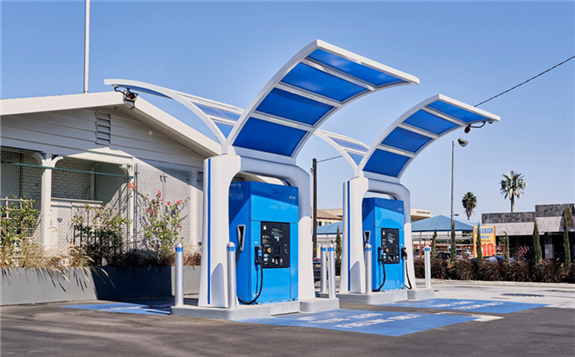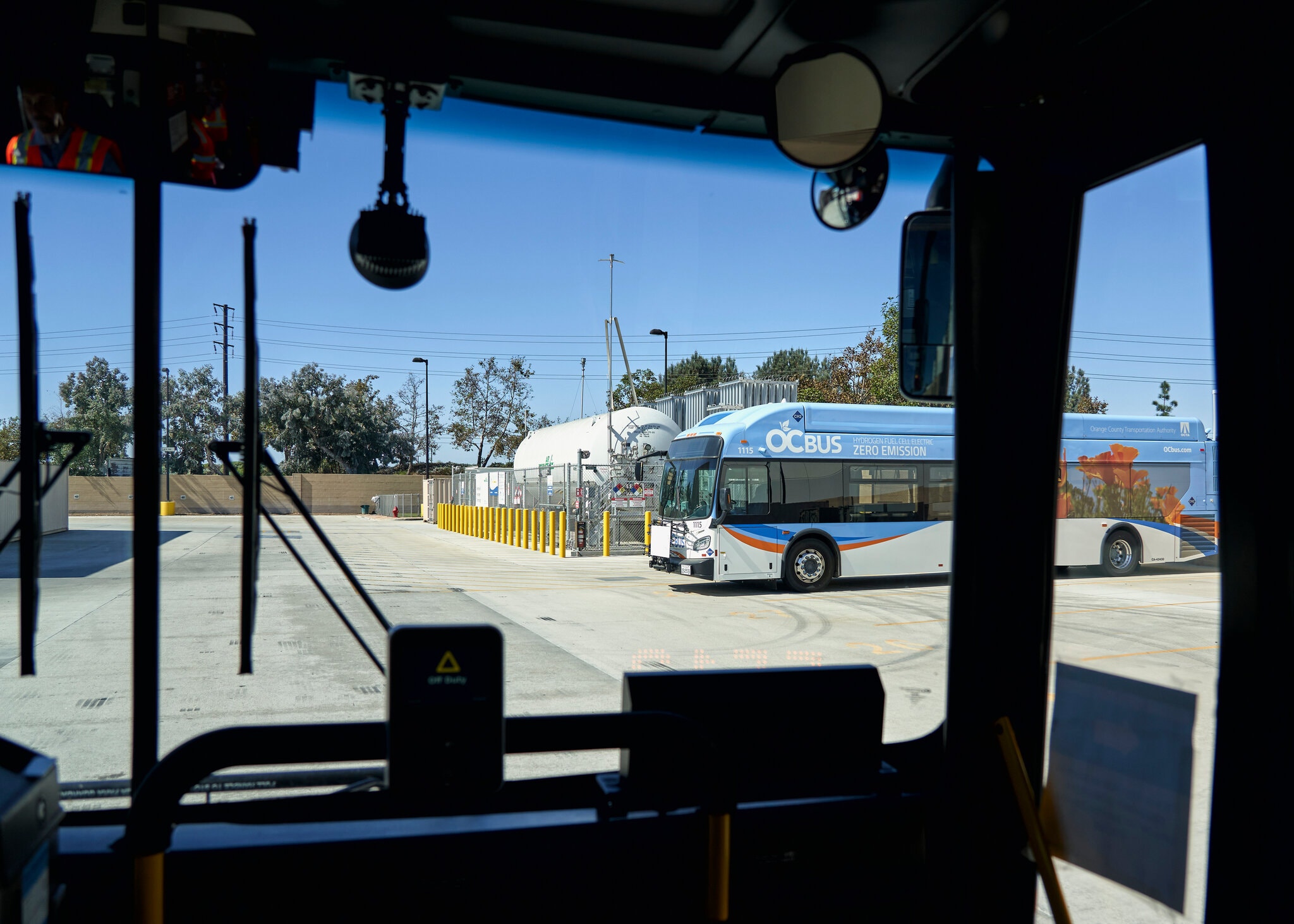Since President George W. Bush fueled a minivan with hydrogen 15 years ago, the promise of cars and trucks powered by the fuel has come up mostly empty.

That hydrogen pump, in Washington, closed long ago. But in California, the beginnings of a hydrogen economy may finally be dawning after many fits and starts.
Dozens of hydrogen buses are lumbering down city streets, while more and larger fueling stations are appearing from San Diego to San Francisco, financed by the state and federal governments. With the costs of producing and shipping hydrogen coming down, California is setting ambitious goals to phase out vehicles that run on fossil fuels in favor of batteries and hydrogen. Large auto and energy companies like Toyota Motor and Royal Dutch Shell have committed to supplying more cars and fueling stations.
“In past cycles, there was always something missing,” said Matthew Blieske, Shell’s global hydrogen product manager. “There was a policy missing, or the technology wasn’t quite ready, or people were not so serious about decarbonization. We don’t see those barriers anymore.”
Some energy executives said they expected investment in hydrogen to accelerate under President-elect Joseph R. Biden Jr., who made climate change a big part of his campaign and proposed a $2 trillion plan to tackle the problem.
A recent McKinsey & Company study estimated that the hydrogen economy could generate $140 billion in annual revenue by 2030 and support 700,000 jobs. The study projected that hydrogen could meet 14 percent of total American energy demand by 2050.
The use of hydrogen, the lightest and most abundant substance in the universe, is still in its infancy, and California is determined to be its cradle in the United States, with $20 million in annual funding from the California Energy Commission through vehicle license fees. California will have spent about $230 million on hydrogen projects by the end of 2023. The state now has roughly 40 fueling stations, with dozens more under construction. While those numbers are tiny compared with the 10,000 gasoline stations across the state, officials have high hopes.
With about 7,500 hydrogen vehicles on the road, an aggressive state program of incentives and subsidies from cap-and-trade dollars envisions 50,000 hydrogen light-duty vehicles by middecade and a network of 1,000 hydrogen stations by 2030. The infrastructure required for producing, transporting and dispensing the gas alone will cost about $10 billion, according to California hydrogen researchers, who expect both private and government investment.
Other states are much further behind. A vast majority of the country’s hydrogen fueling stations and vehicles are in California.

Hydrogen-powered vehicles are similar to electric cars. But unlike electric cars, which have large batteries, these cars have hydrogen tanks and fuel cells that turn the gas into electricity. The cars refuel and accelerate quickly, and they can go for several hundred miles on a full tank. They emit only water vapor, which makes them appealing to California cities that are trying to reduce pollution and greenhouse gas emissions.
“Almost any objective analysis for getting to zero emissions includes hydrogen,” said Jack Brouwer, director of the National Fuel Cell Research Center at the University of California, Irvine.
Mr. Brouwer does not think hydrogen will become the dominant energy source soon, but he argues that it has great potential as a fuel for vehicles, power plants and appliances. Hydrogen, he said, will complement the use of lithium-ion batteries, solar panels, wind turbines and natural gas.
U.C. Irvine has experimented with hydrogen for years and formed partnerships with local governments and major corporations to popularize its use in Southern California.
Just over a decade ago, Tim Brown worked on gasoline systems at General Motors. He went back to school in 2004, studied hydrogen with Mr. Brouwer and “became a believer.”
Five years after earning his doctorate in 2008, he founded First Element Fuel, which operates 21 hydrogen fueling stations, including a four-pump unit at an Arco gas station in Fountain Valley, about a 10-minute drive from U.C. Irvine. The company plans to build up to 80 stations across the state, under the brand name True Zero.
This article is www.nytimes.com